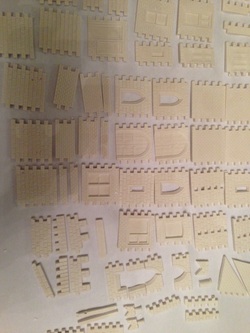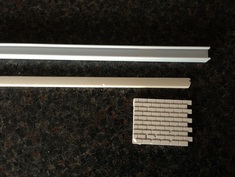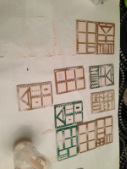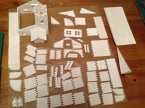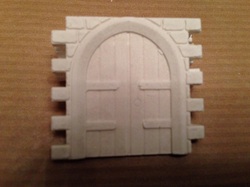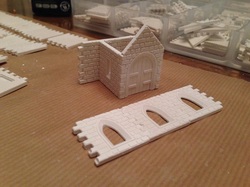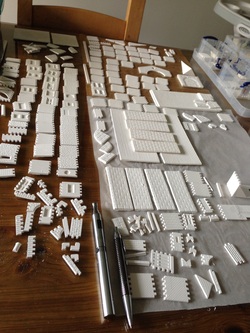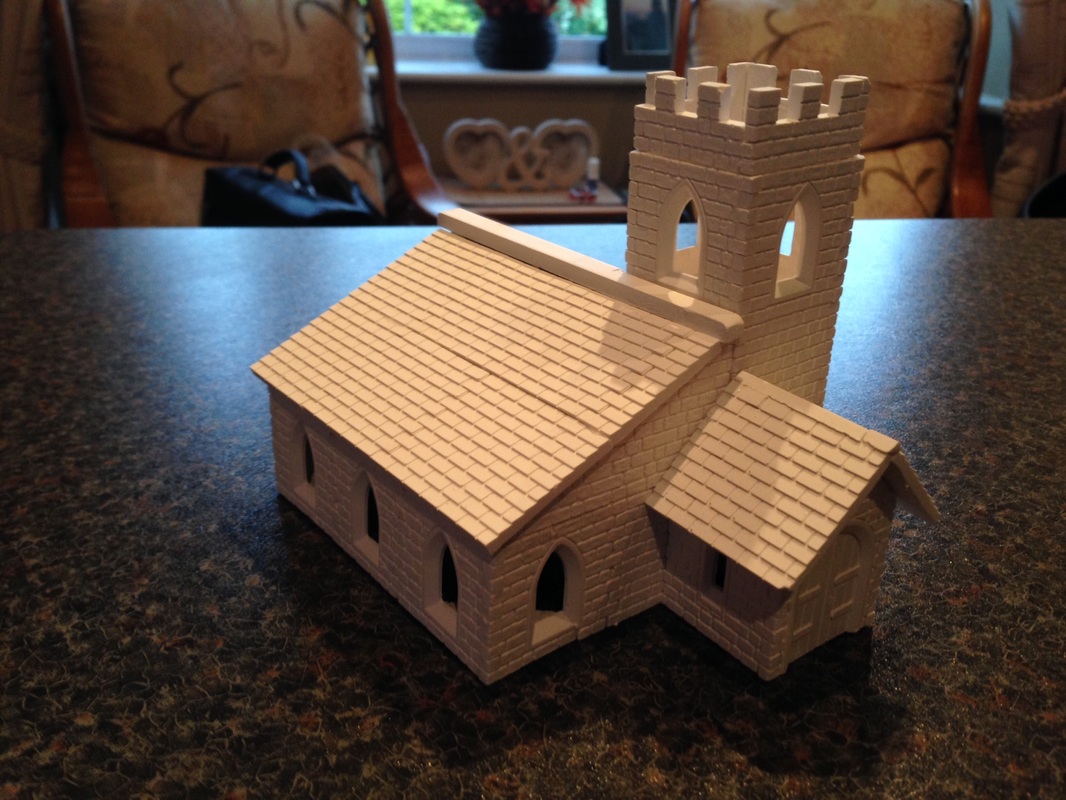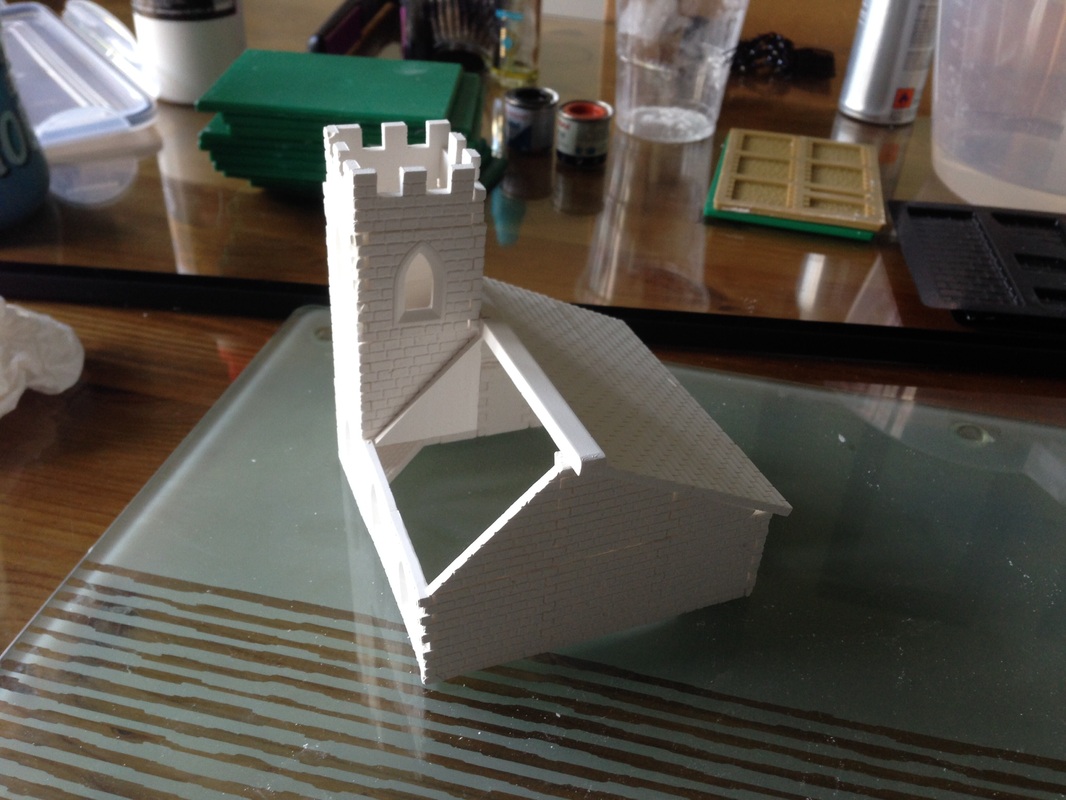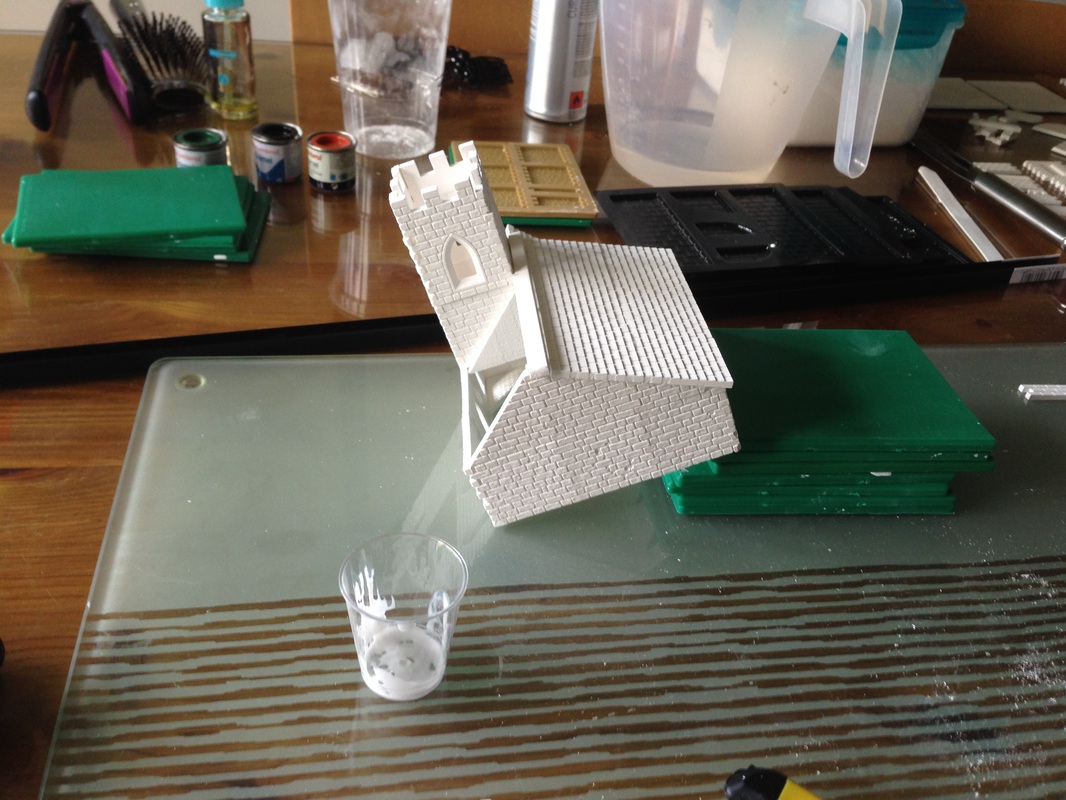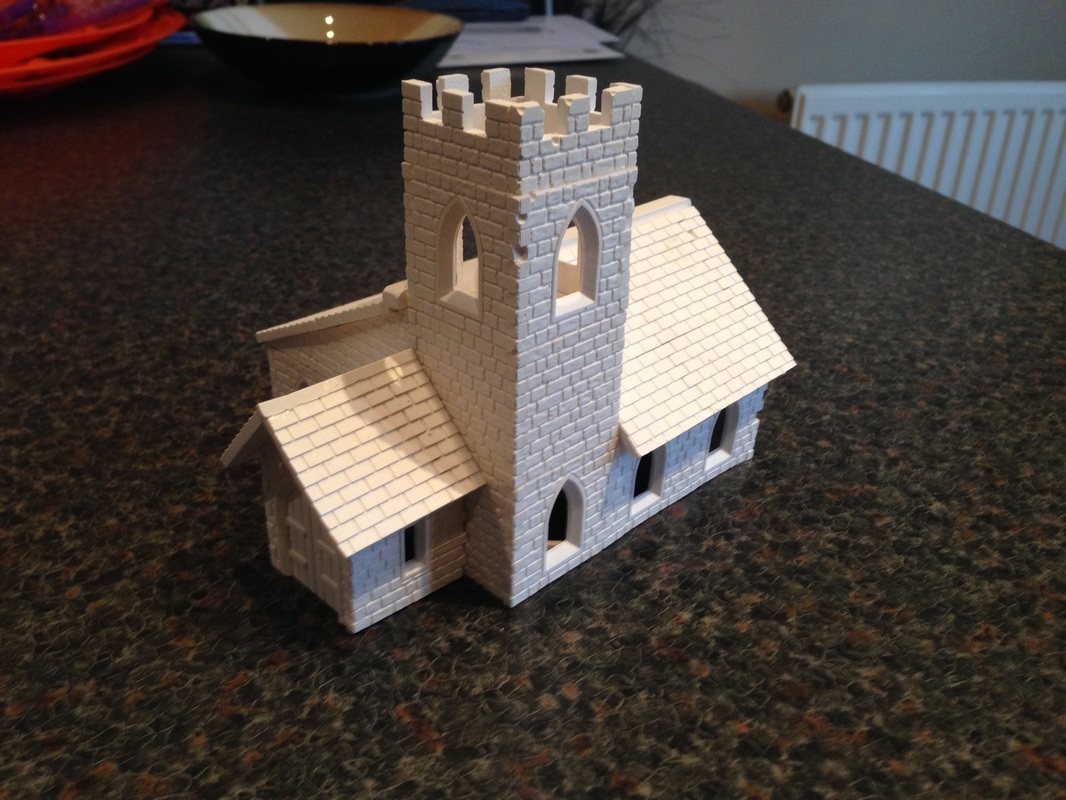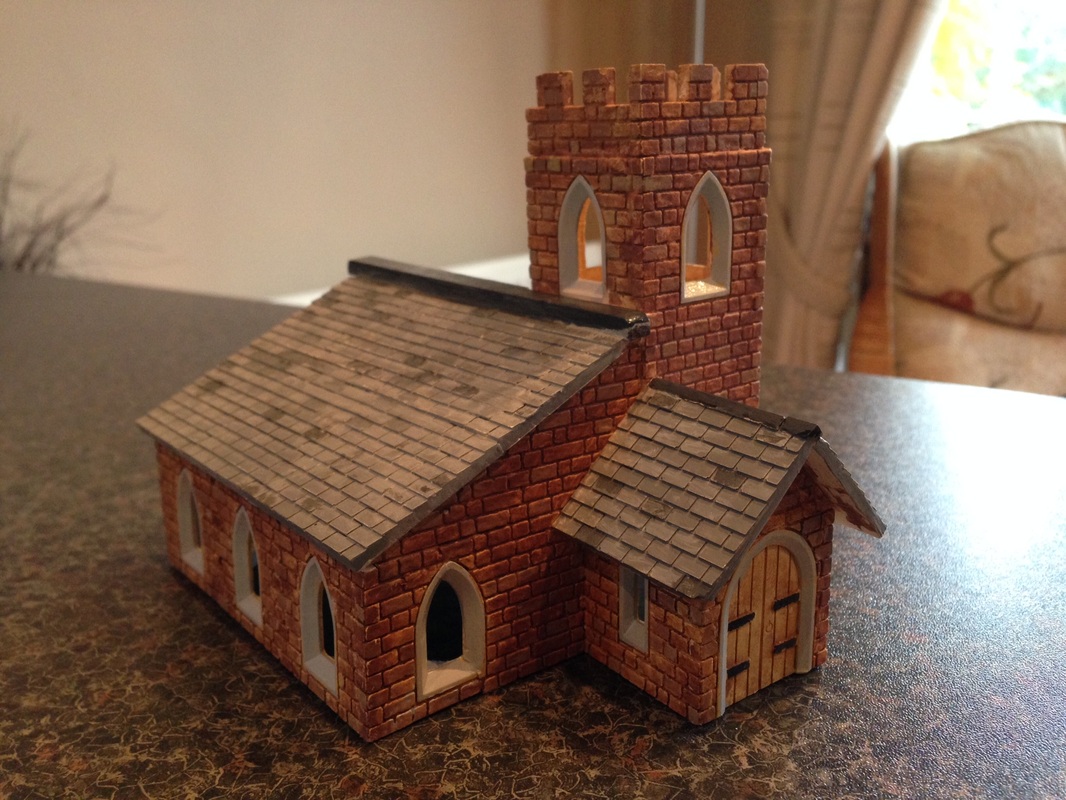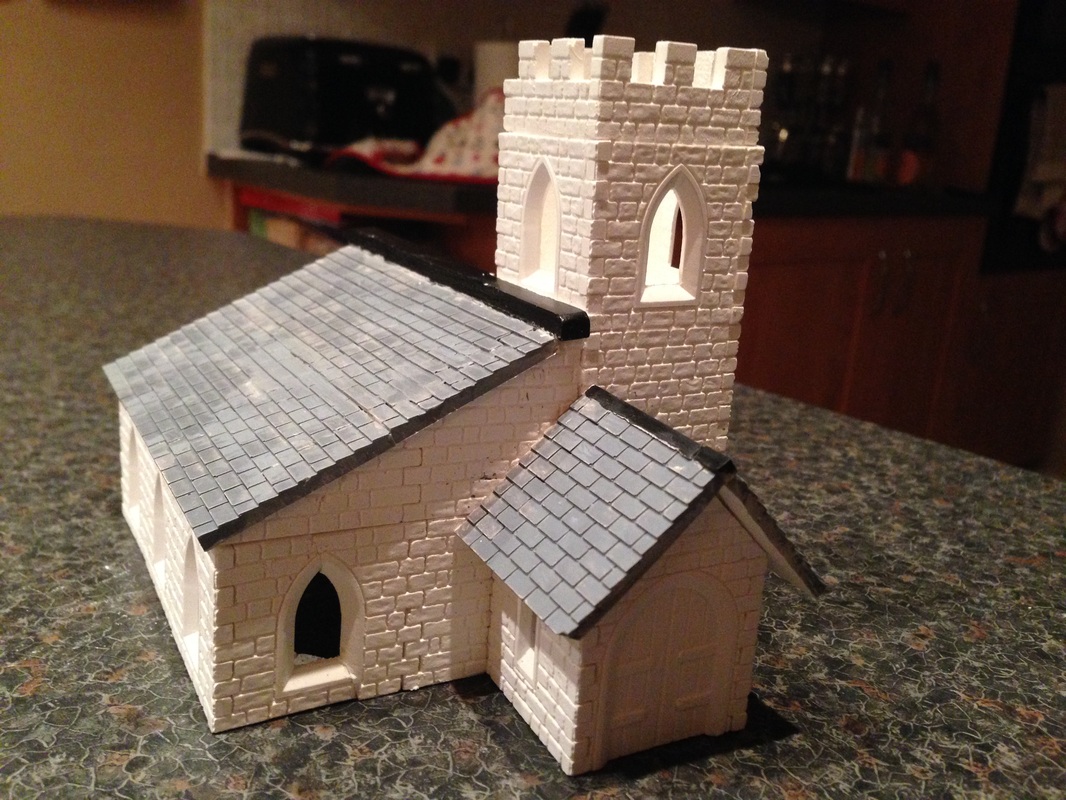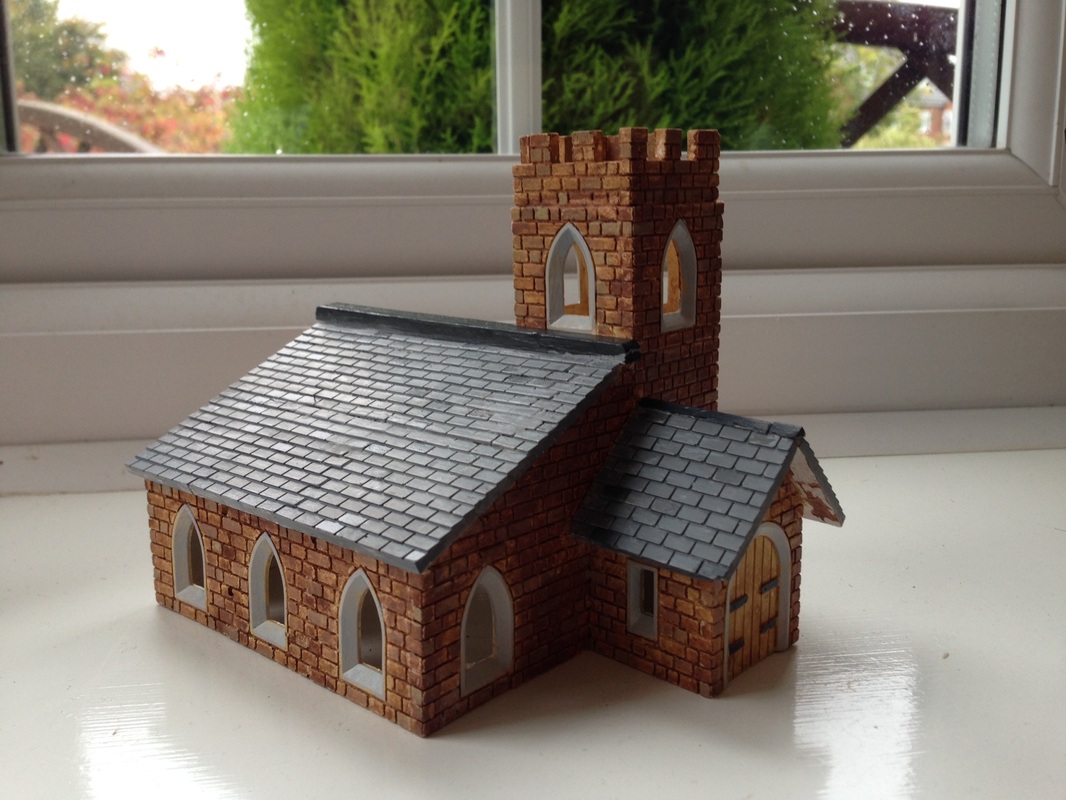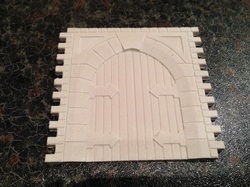 Linka Castle door
Linka Castle door
Creating you Linka pieces will be where you need to start
it will take some practice to get the best results, from what powder you should use, to the consistency of mixing and ensuring you don't get air bubbles in the results, it all takes a little bit of preparation and practice, but don't be put off, once you master each area, it will come as second nature
it will take some practice to get the best results, from what powder you should use, to the consistency of mixing and ensuring you don't get air bubbles in the results, it all takes a little bit of preparation and practice, but don't be put off, once you master each area, it will come as second nature
|
Download the new casting perfect casts article released in May 2016
|
| ||||||
|
Lots of Pieces
While I am waiting for my models glue to dry I just keep a good production line of pieces going, Its better to let them fully dry before you try to store them On the Right here you can see I have assembled half of the roof, I created a beam to go right across the top of the building as I thought it would look good and add strength. I went into a hobby shop and found some plastic extrude, like a plastic I frame, filled it with Herculite 2 plaster, it took a bit of getting out but I managed it, although I am keeping my eyes open for something easier to use. |
|
The Painting
I am writing this on the 22 October 2013, a marker in the sand as this is the first attempt I have made at painting one of these models, I painted the roof with a wash of water colour, the problem was though is that the water colour paints would not cover the glued seems, so I switched to acrylic, I am no expert in paint and have virtually no experience at all, so I just mixed very tiny amounts of paint to get the shades I needed and practiced on a lot of broken pieces that I had accumulated, I soon found it would be better to thin the paint and just keep building up very thin layers. When I had everything covered it all looked a bit too plain, so I just mixed a brush full of brown, mixed it in and painted odd bricks all over the building, I kept doing this and to be honest it started to look much better. The key here is trial and error, I am sure it will take me a long time to learn the different techniques, and I will keep sharing ideas with you over the course of time. I f you have lots of ideas and they work, let me know and I will be glad to share them on the site. |

